Sharing the results from my latest Moth Trap Session. I have written posts about setting up a moth trap and on collecting the results if you want some more background info on how and why I use a Moth Trap

Exciting news today... I finally have an opportunity to try out my new Moth Trap!
Well, I say new... technically its over 20 years old...
Right, lets back up and start again.
I have been Moth Trapping for about 6 years now... and for the last 5 I have been using this trusty little Heath Moth Trap (pictured below). It was bought for me by my partner, and its been well used and greatly appreciated. It has enabled me to explore the garden at night, and has shown just how much wildlife there is to look at.

Four weeks ago, my partner came home from one of her Camera Club meetings with a list of equipment for sale. One of the members was taking a step back from photography, and was flogging a lot of old gear. There were al sorts on that list, from DSLR camera bodies, to various lenses, bags and other accessories. I took a look and immediately I noticed at the bottom of the list - Moth Trap £30.00
I asked her to find out more, and to cut a long story short, earlier this week she came home with this wooden Skinner Moth Trap
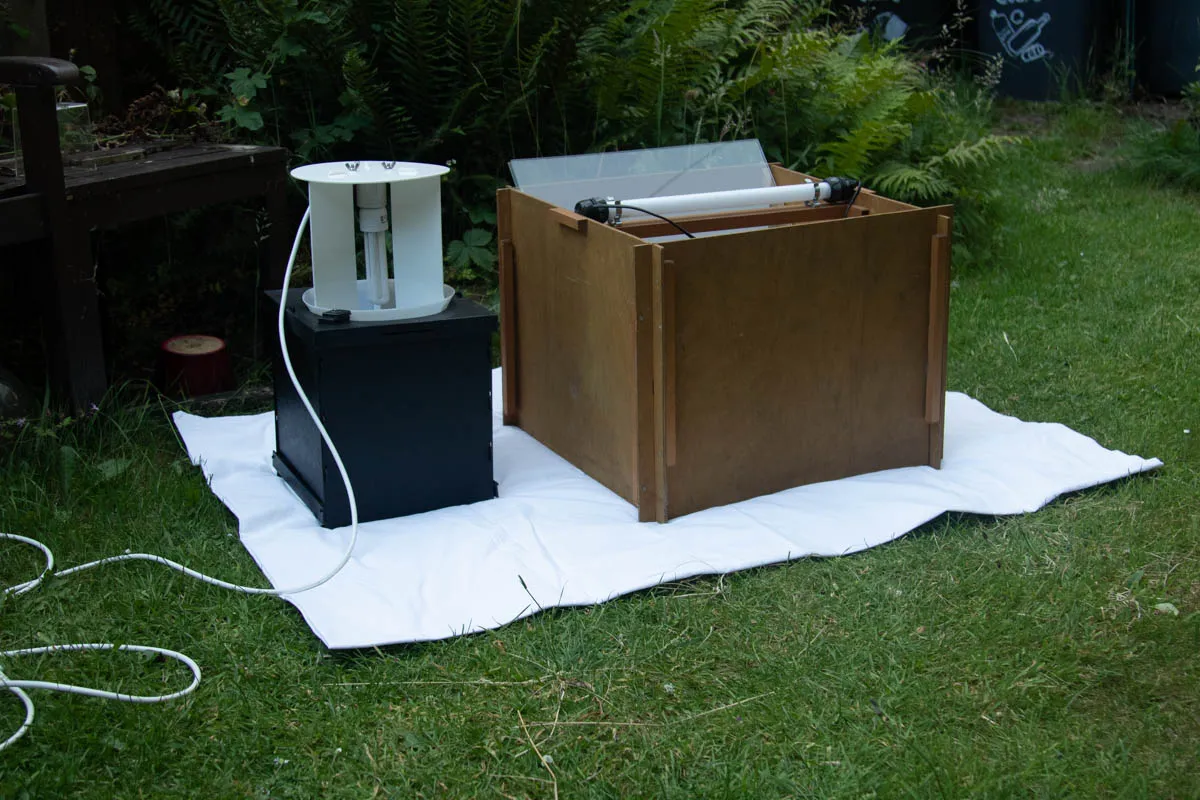
Two things are obvously apparent. The construction is different, instead of a cone with a light bulb suspended above it, the Skinner Trap has two angled sheets of plastic with a small gap inbetween. This allows the moths in, but makes it hard to fly out again.
The other obvious difference is the shear size of the thing, it makes my little Heath Trap look quite small and pokey in comparison!
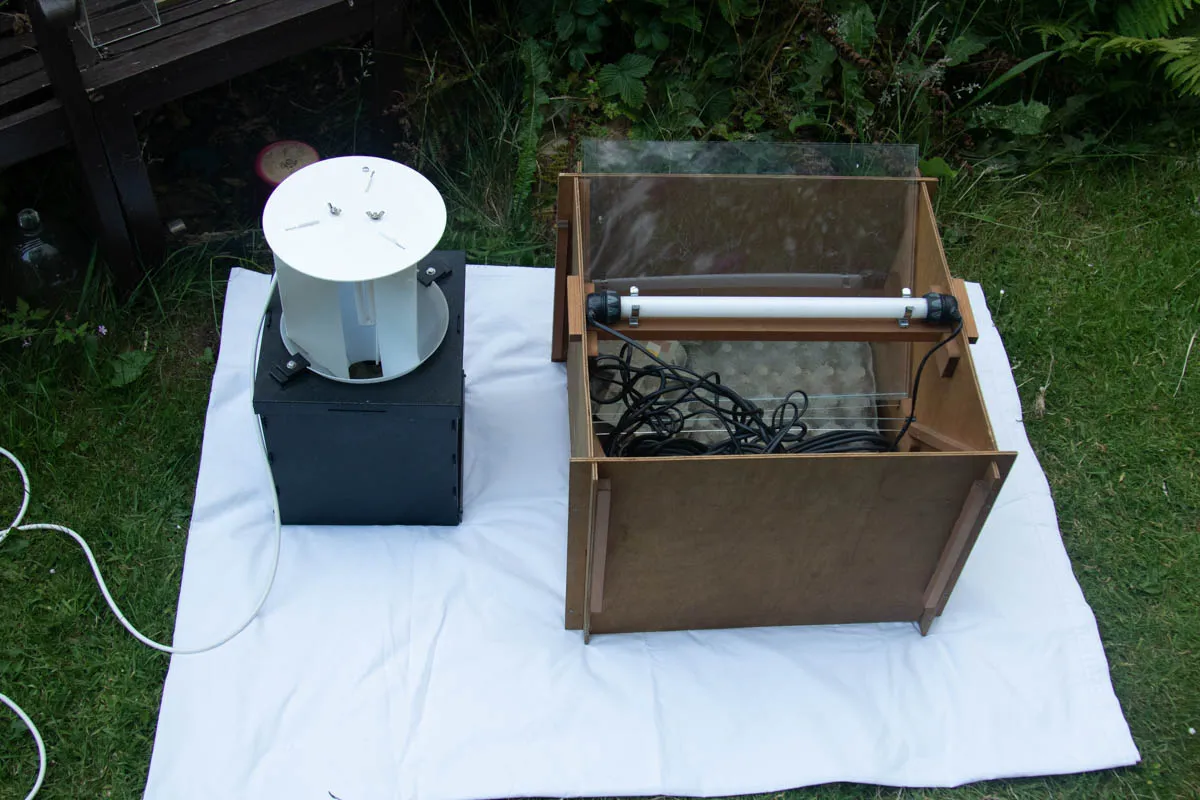
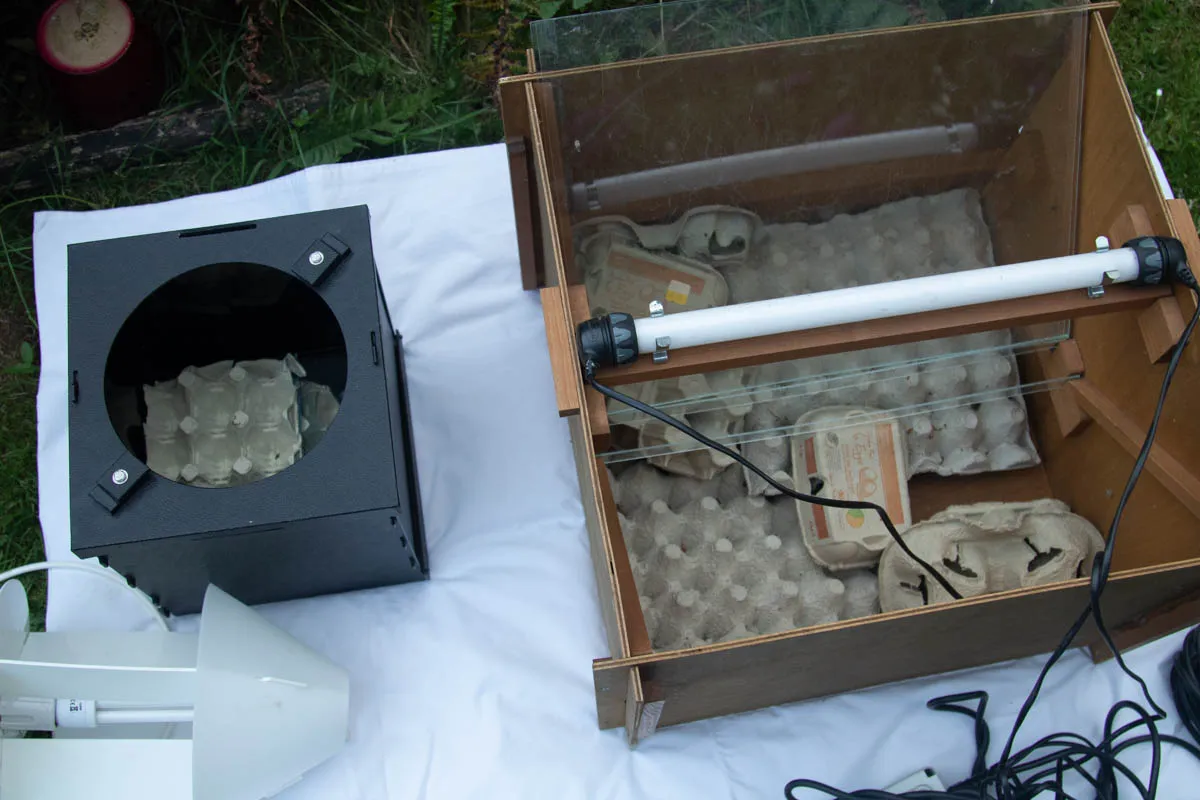
A huge difference in size. More space, means more egg trays and hopefully potentially more moths
always a good thing!
Here you can see the gap in the centre of the Skinner trap (underneath the light fitting). The way the light bulb is positioned is also better allowing more light to be given off, and hopefully making it more visible to nearby moths.
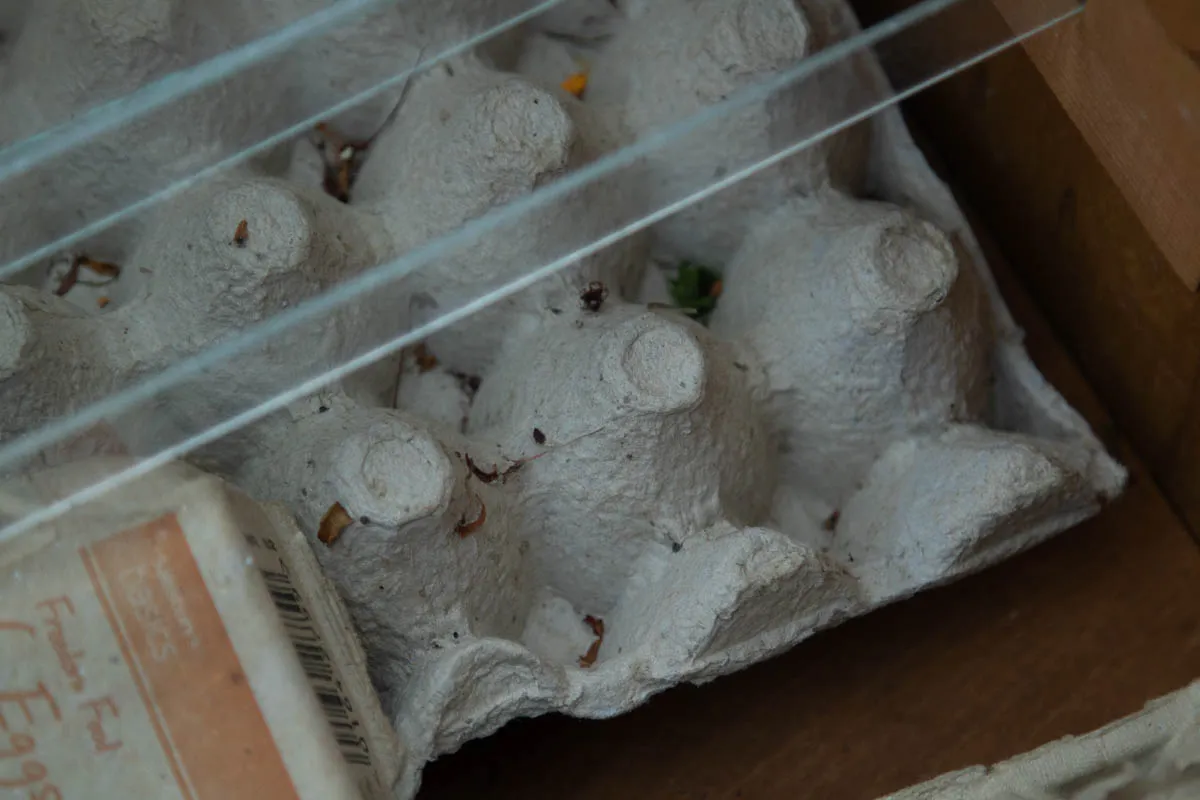
I mentioned this belonged to someone else. When he handed it over to my parnter, he told her that he had had the trap over 20 years, and hadn't actually used it for the last 5 years or so....and to be honest it looks like its been sat in a shed somewhere covering dust and spider webs!
So, firstly it needs a quick clean...
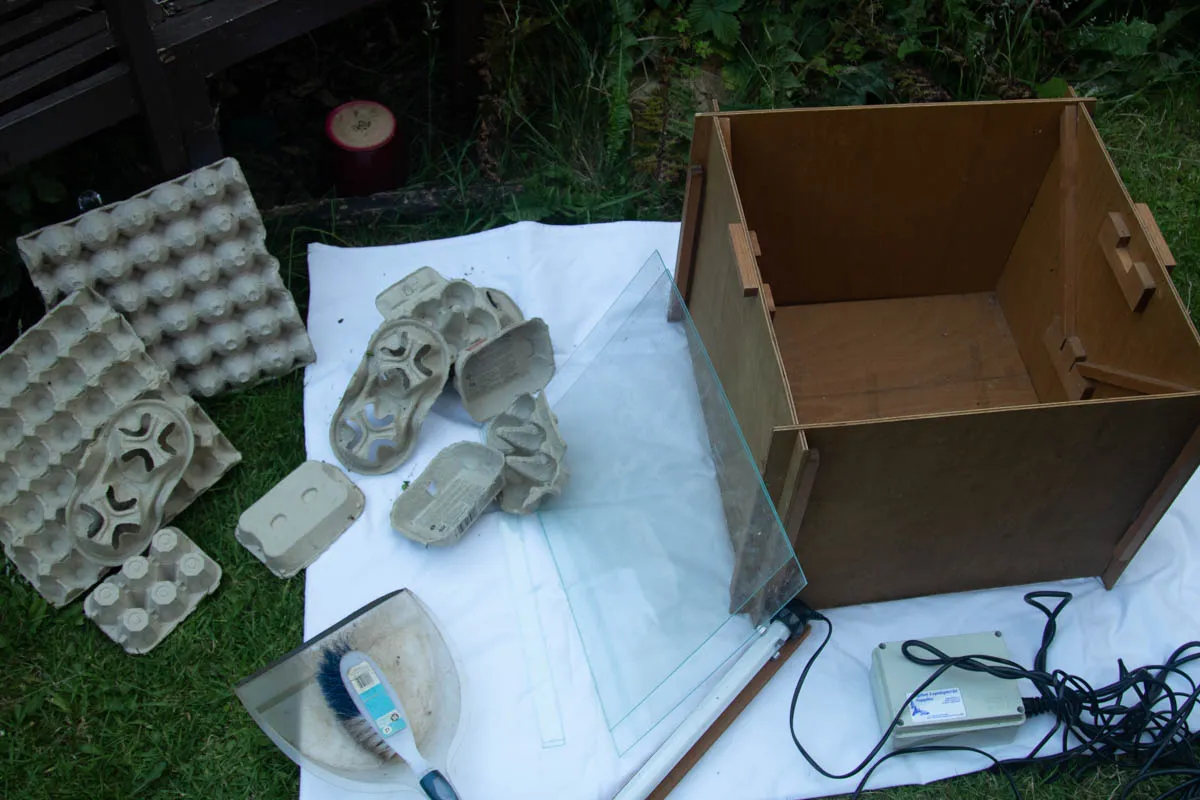
First I remove the light, and lift up the plastic sheets
Then I can empty out all the old egg trays.
I believe these skinner traps are designed to be flat packed, so they can be easily stored and transported. I carefully lift out one wooden panel...
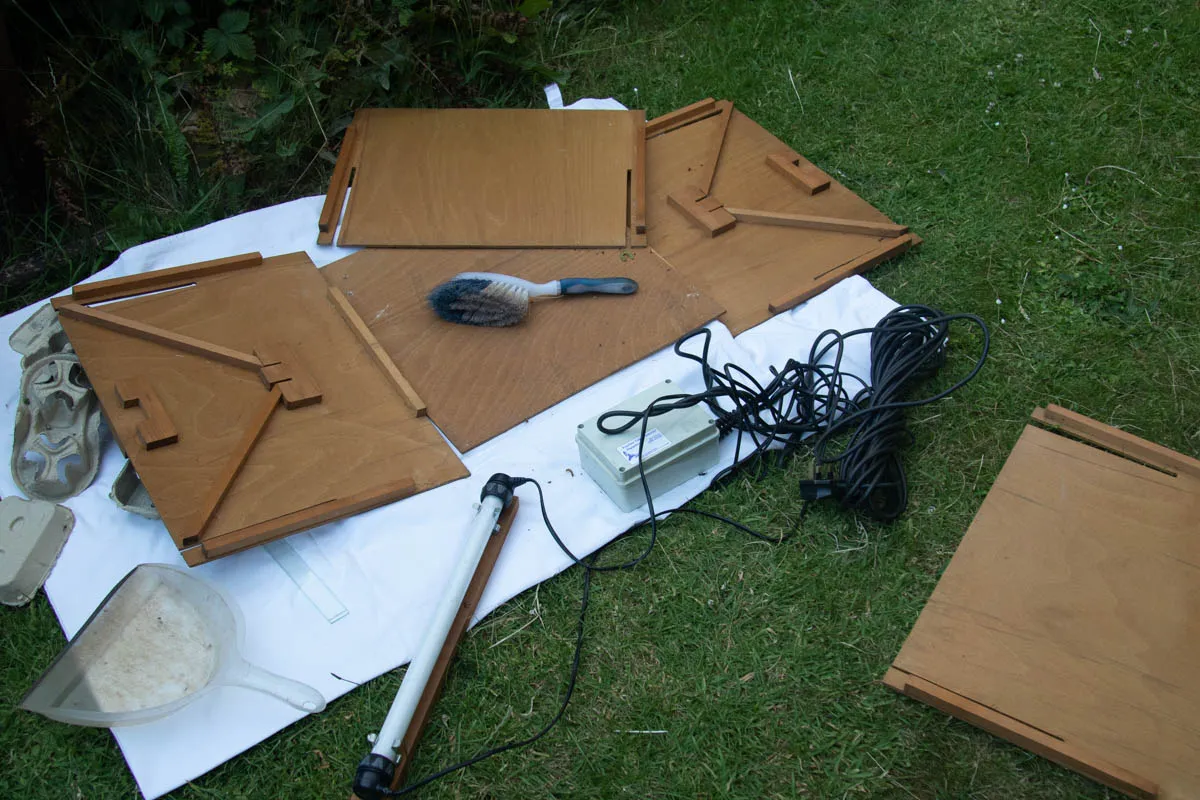
...and the whole thing collapsed!
There's your flat packed design then haha!
I quickly grab a brush and remove the random bits of spider web, dead flies, spider molts and any other detritus
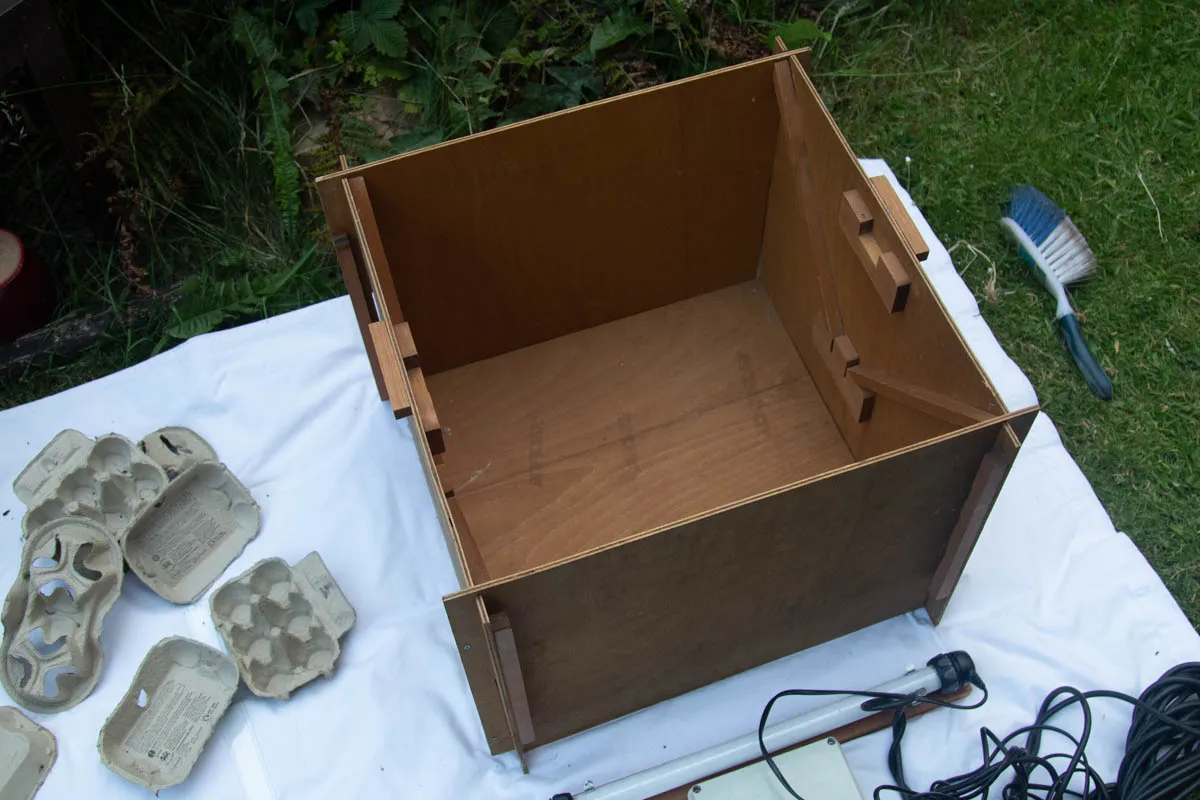
There, much better!
Now to work out how to arrange the egg trays. All these are are bits of cardboard, but the shape of them allows all sorts of nooks and cranies for moths to hide in, so when they fly into the trap, their natual instinct is to hide away from the light
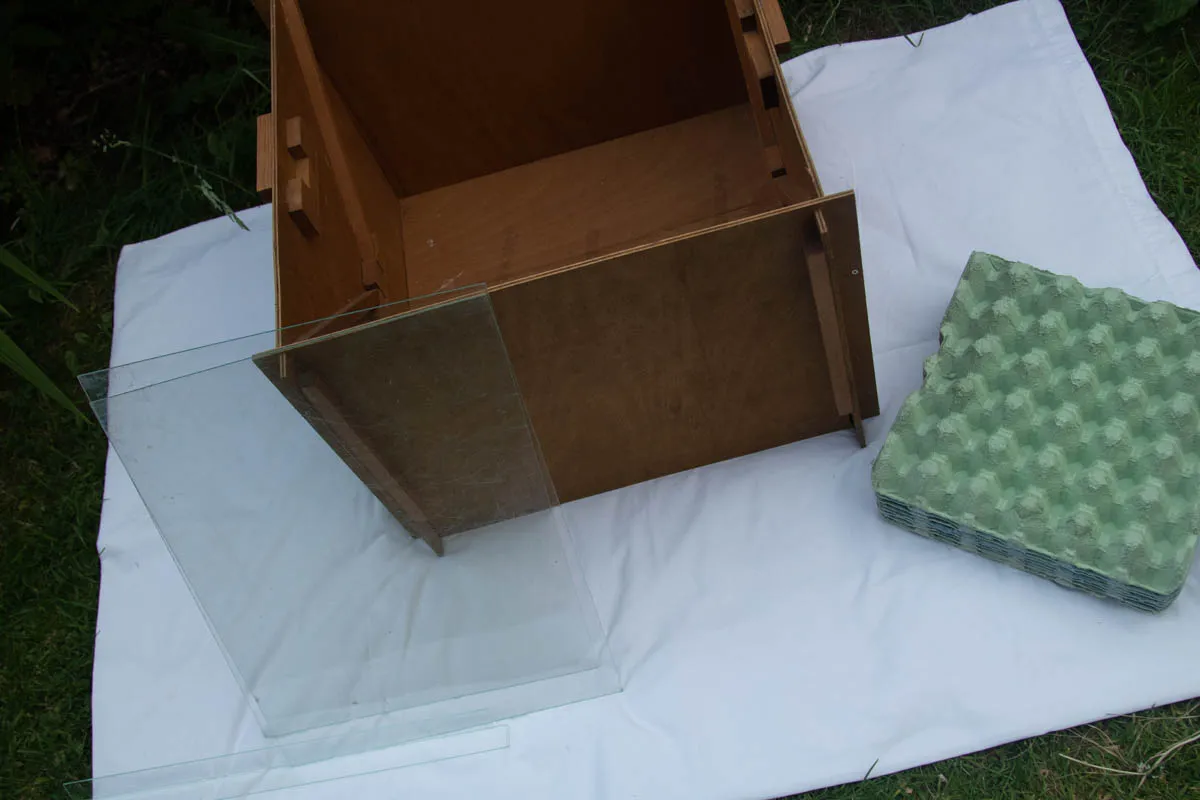
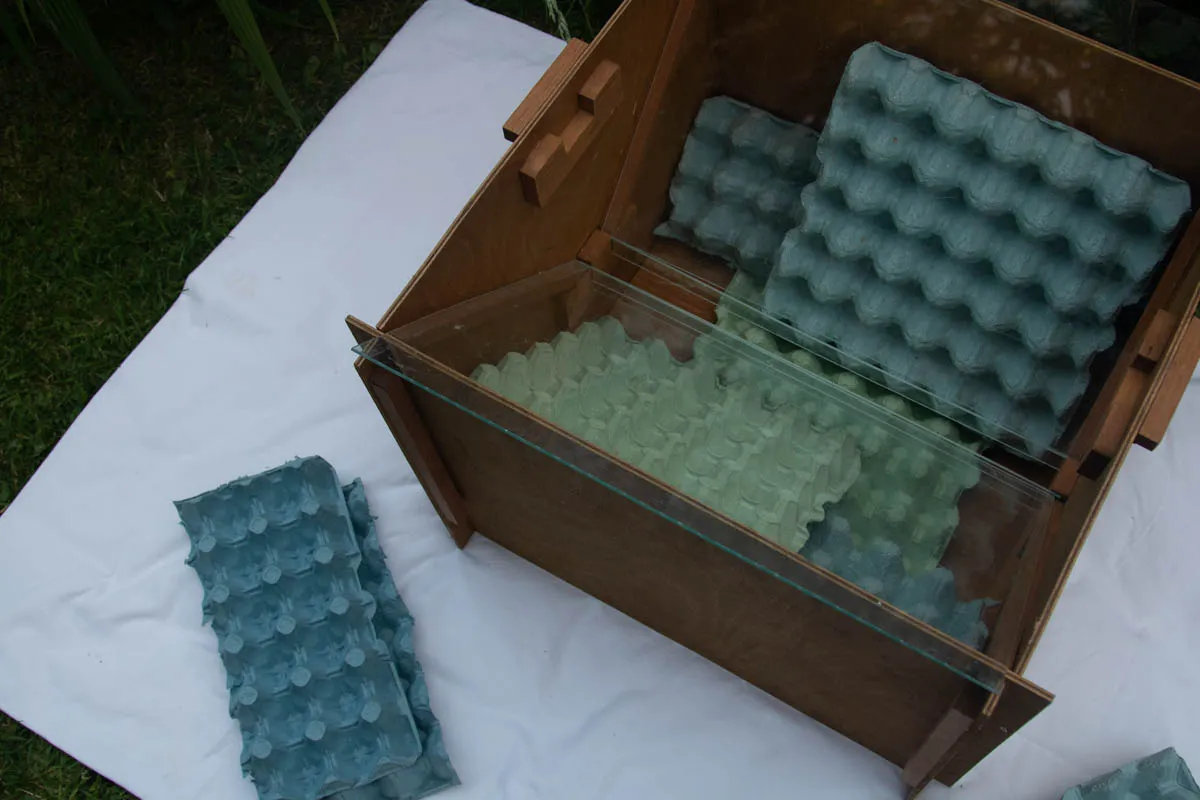
Now I can set the trap into position, and place the light back into the top of the trap...
How cool does that look!
Disclaimer - please note... I am talking about trapping moths, but this is NOT a killing trap. The light attracts the moths, the carboard inside encourages them to hide inside the trap and when I am ready I will open it up to look at and record what species I see, and then let them all fly away.
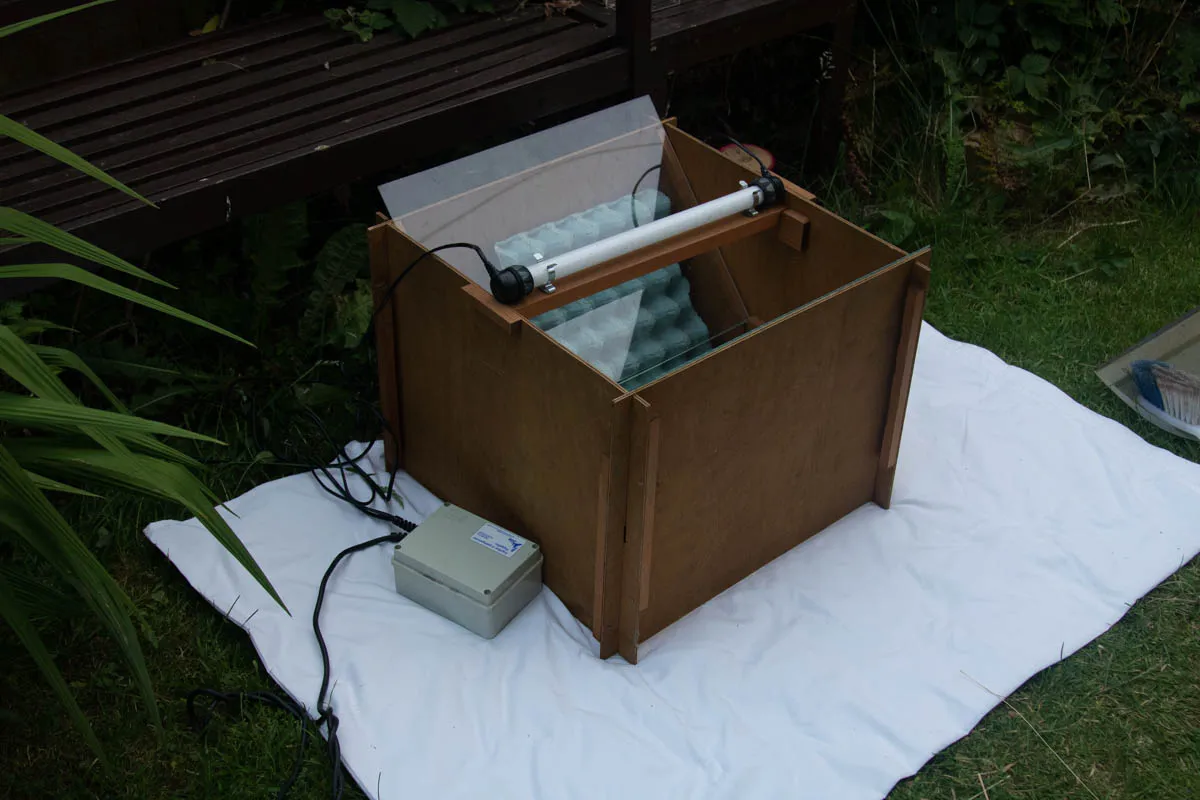
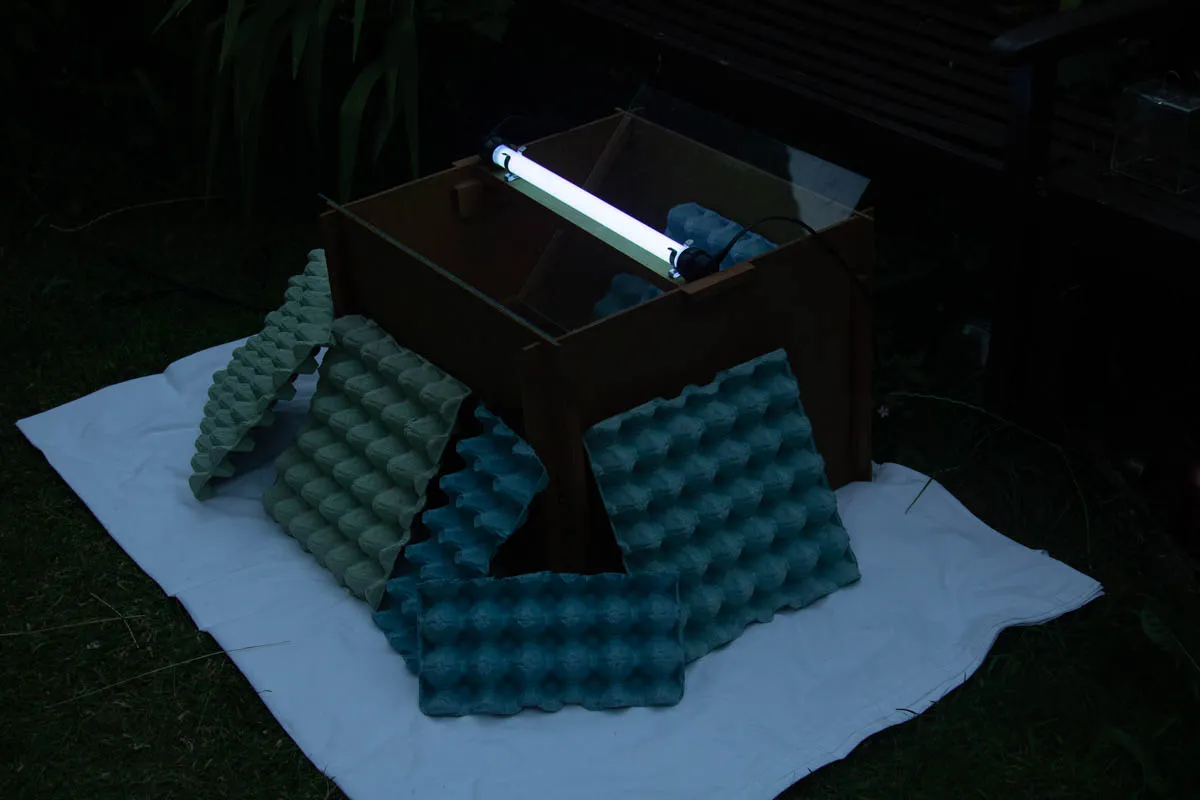
And here it is. Darkness has fallen, and I have turned the light on.
It doesn't look very bright to me, and then I remembered something my partner said earlier. The guy I bought this from said the trap was 20+ years old AND that this was the original bulb.
How may light bulbs do you know that are still effective 20 years later?
I think I'm gonna have to invest in a new bulb.
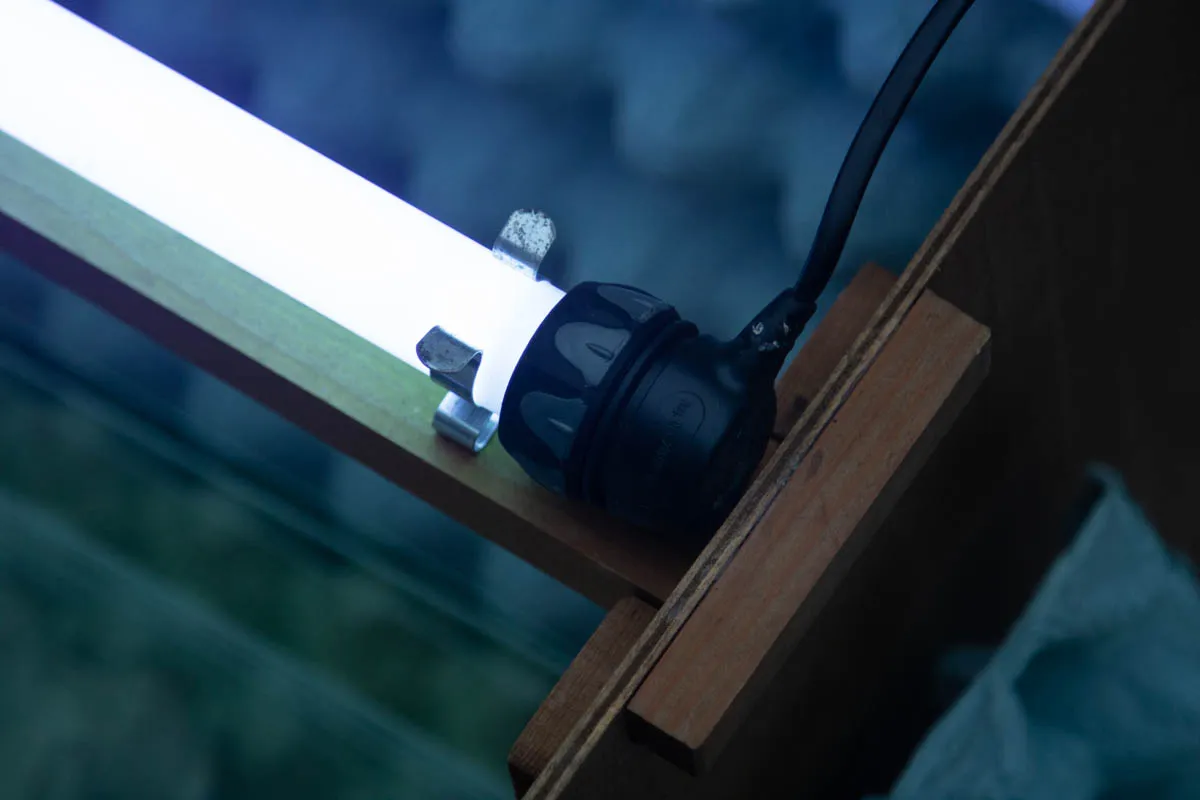
This will have to do for now I guess... there is some light, and moths have already started appearing.
So here we go, I am now ready for the first session using a Skinner Trap
How will it compare to my little Heath Trap? Well, there is only one way to find out... check back tomorrow for my next post when I find out how effective this new(old) trap actually is.
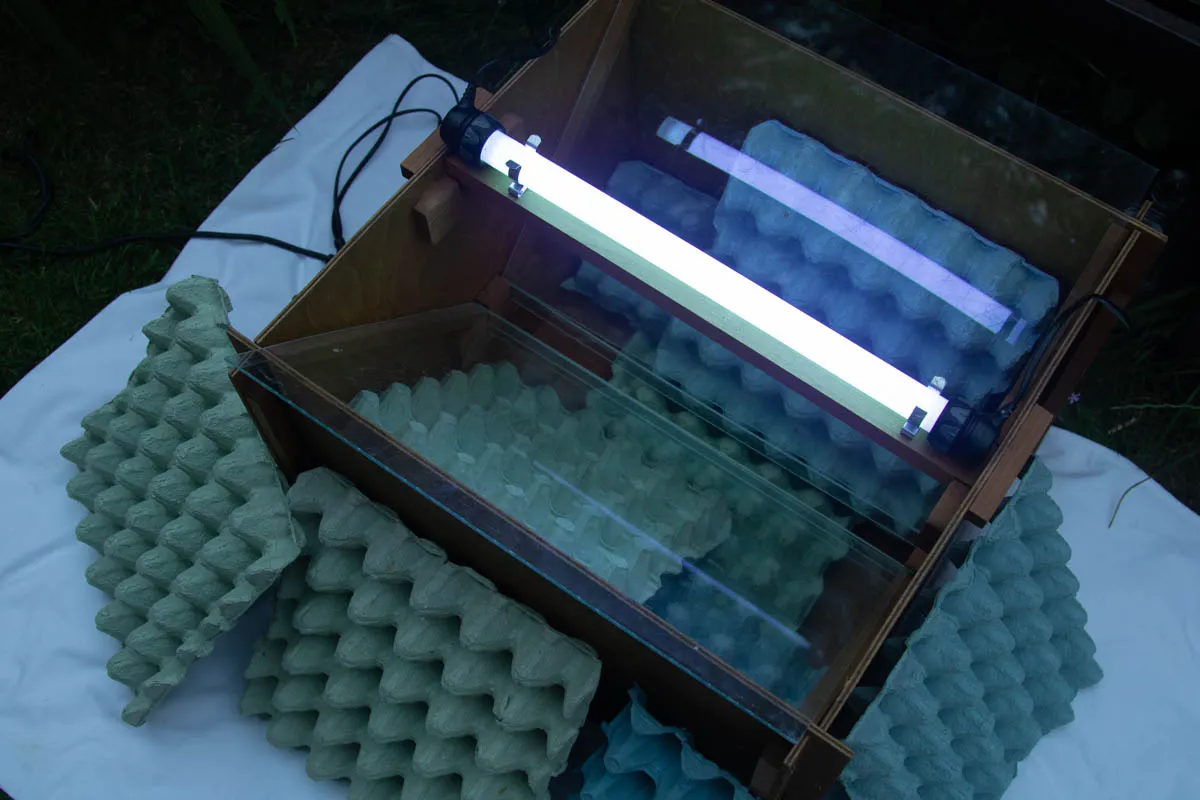

Notes on Pictures: Since I started moth trapping 5 years ago, I have been slowly building up collection of Library Images. The idea being that once I have taken a picture of a particular species of Moth, I don't need another picture of the same species a year later. It’s a waste of time and energy. I only take pictures of new species, or of moths that are difficult to ID, so I can get the records verified.
While in my care, all individuals are looked after, and after Photographs have been taken, they are all released safely outside.
All names confirmed and checked via Wikispieces
Further Research from UK Moths and NatureSpot

If you have any thoughts or opinions on this article then I'd love to see your comments.
And if you really like the content then maybe you would like to upvote or re-hive it.

Check out my website for more of my work.
